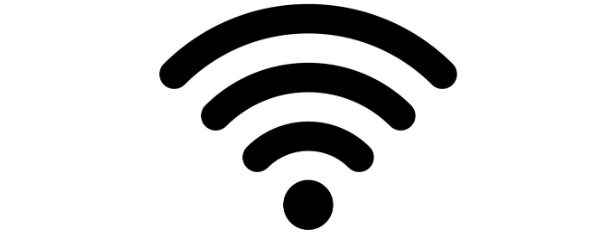One of the most frustrating things about Wi-Fi is how vulnerable the signal is to interference or obstruction.
Rather than stand next to the router, laptop in hand, you can improve performance with a smarter router and some simple tricks.
Everything from brick walls to other Wi-Fi devices can seriously deplete your Wi-Fi from the 50m (160ft) that a standard antenna should be able to achieve.
It might seem strange that your radio is picking up a signal from many miles away just fine in your back room, but the Wi-Fi signal can’t make it there from the porch, but that has to do with the frequencies involved and there is little you can do.
You should try and position your router so that the direct line between it and the places you want to use devices are not blocked by any of the materials listed, but assuming that still doesn’t work and you’re not keen to remove load-bearing walls, there is a potential solution in the form of a mesh Wi-Fi system.
What is a mesh Wi-Fi system?
Mesh Wi-Fi systems are Wi-Fi networks created using several hubs to boost the signal.
They’re not like plug-in range extenders that create new networks with different names, which can be very frustrating to use as you move around the home.
There is a single network name/password you can use seamlessly anywhere in your house.
One of the devices will plug into your router for its internet connection, while the other satellite devices can be connected to the first, either by cable, or simply picking up and extending the signal they receive.
Once up and running, you’ll switch off the router’s own Wi-Fi function, with the new mesh stepping in.
These Wi-Fi systems are ideal not just for bigger homes, but if carefully placed, those with difficult supporting walls.
Material that have most effect on Wi-Fi:
- Brick
- Water
- Concrete
- Marble
Material that have least effect on Wi-Fi:
- Glass
- Wood
- Plaster
- Drywall
Run cables for select devices
Although it doesn’t seem very hi-tech, if you can do it easily it’s well worth running an Ethernet cable (the standard networking socket type found on nearly all routers) to a high-traffic device, thereby releasing the bandwidth it occupies on your wireless network.
Devices that are near your router gobble up more of the available bandwidth, so if you are streaming 4K video to a TV near the router, people (or smart devices like security cameras) further away don’t stand a chance.
WHICH ONE SHOULD I BUY?
MESH WI-FI SYSTEMS, LINKSYS
Cheaper than the older tri-band, the dual-band (2.4 and 5Ghz) system works just fine for most users.
Linksys uses the technical term ‘node’ for each point on the network but provides a simple set-app.
Additionally, you won’t need to worry about moving devices from your original modem/router as there is a ‘bridge’ option – a significant feature for Smart Home users with hubs, NAS drivers and the like.
TP-LINK DECO MESH WI-FI SYSTEM
Like the other products here, this can be connected to any provider’s modem.
Despite being the cheapest three-unit kit available, it is well equipped with dual bands (2.4 and 5Ghz).
There is a bridge function, and the ability to create a guest network for security.
Parents might also find the ability to group devices (say the kids’ iPads) and throttle their connections without affecting all the others very useful.
NETGEAR ORBI
The original Orbi has now been complemented with a new version that uses a rather smaller power-socket piece for a single satellite device.
This Wi-Fi system cleverly uses an additional 5GHz frequency for ‘backhaul’ (the data being sent around the mesh) maintaining speed.
It’s a good Wi-Fi system, though sadly the new satellite piece has no Ethernet ports.
There is also no bridge mode.
GOOGLE WI-FI SYSTEM
The beautifully designed Google Wi-Fi system of white pucks has had some issues and Google even had to suggest Windows 10 and Xbox users didn’t use the system until a firmware update had been rolled out.
Now things seem to be going well, although in setup the Google Wi-Fi system forces you to have a Google account (if you have Gmail you already have one, but nevertheless it seems unnecessary).
There is a bridge mode, but it does disable some features.





